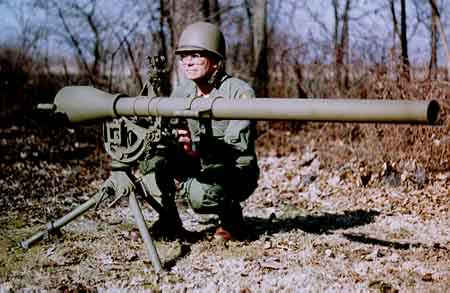75MM RECOILLESS RIFLE, M20


ADDITIONAL TECHNICAL DATA 75 MM RECOILLESS RIFLE, M20
Length..................6 ft. 10 in.
Weight..................114.5 lbs.
Rifling.................Uniform, right hand, 1 turn in 25
Breech..................Interrupted screw
Range...................7000 yards (HEAT round)
Muzzle Velocity.........1000 ft./sec. (HEAT round)
Projectile Weight.......3.19 lbs. (HEAT, shaped charge)
Armor penetration.......4 inches
 BACK TO ROBERTS ARMORY HOME PAGE
BACK TO ROBERTS ARMORY HOME PAGE